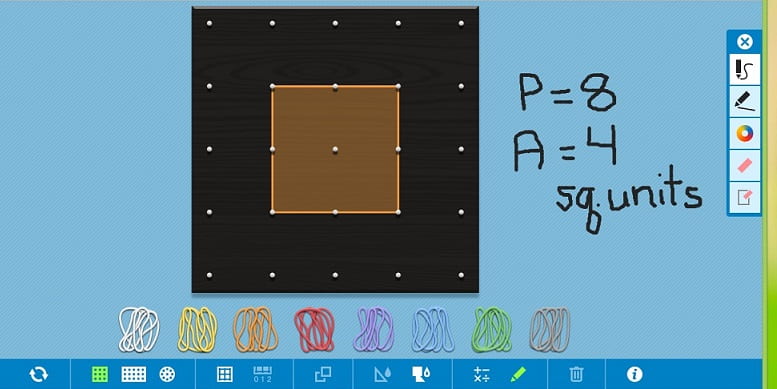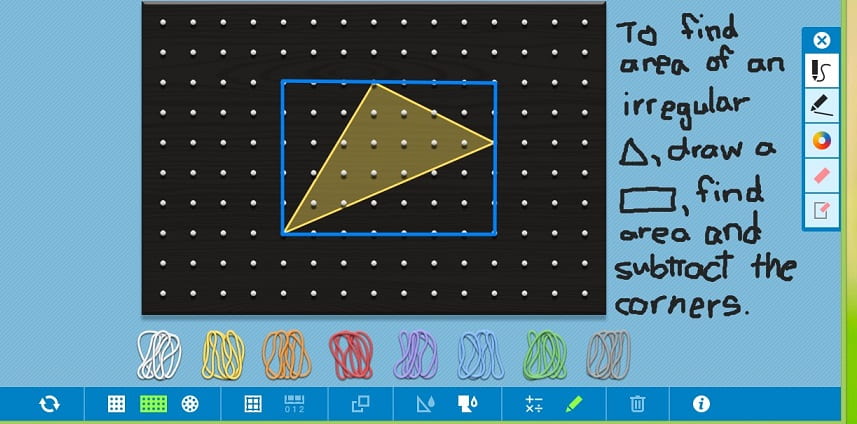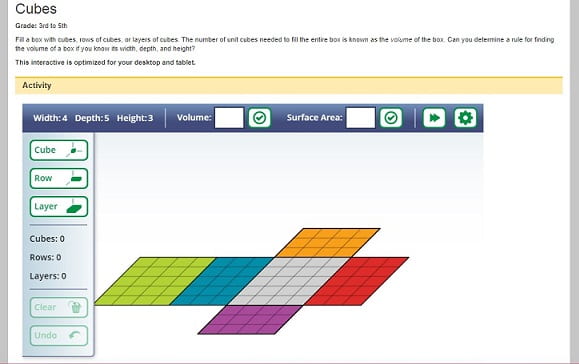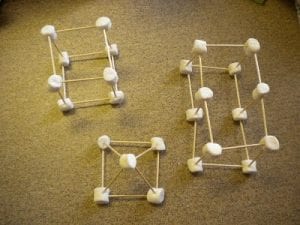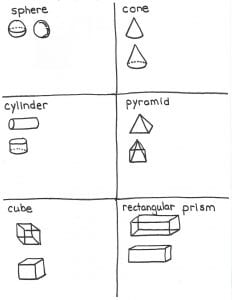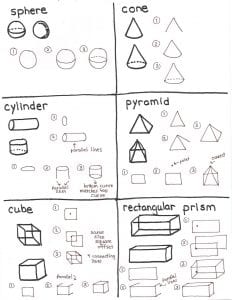Review by C. Elkins, OK Math and Reading Lady
Resource – http://illuminations.nctm.org
This is a math resource I absolutely love! It is a product of the National Council for the Teachers of Mathematics (NCTM). 
This site includes lesson plans and interactive activities. Search in several ways: by topic, by standard, or by grade level. Need some strategy games? Check out “Calculation Nation” (some of which can be played against other players), and “Brain Teasers.” I have just added this link to my Resources page (on my blog home page). Pass this along to parents for them to use with their children at home!
Many of the lessons connect to exploration projects and literature. The interactive features are outstanding!! These are perfect for the smartboard, on laptops, or tablets. Doing Zoom lessons? Then these are also wonderful for sharing the screen to introduce or review concepts. Once you are on the home screen, click the Interactives box (right side) and then the desired grade level. There are dozens of great applets, but here are a few you might really like. I have linked them for easy reference, so just click on the title and you’ll be there:
Dynamic Paper: Customize graph paper, number lines, spinners, nets, number grids, shapes (to include pattern blocks, color tiles, and attribute blocks), and tessellations. You can also choose inches or cm. These can be customized, saved and printed as jpeg or pdf. I created the spinner shown here from this application.
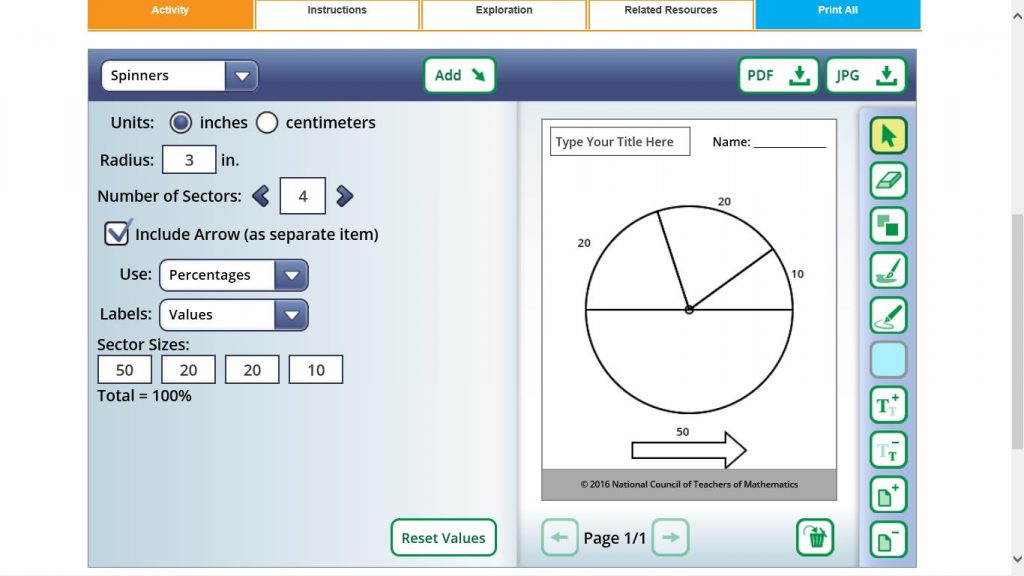
Five Frame and Ten Frame tools: Geat activities to build number sense using five or ten frames. These may take 1-2 minutes to load.
Cubes: Build a rectangular prism one cube, or row, or layer at a time and then compute the volume or surface area.
Coin Box: Drag and exchange coins. There is also a feature I like (the grid at the bottom right corner), which puts coins in blocks (by 1s for pennies, 5s for nickels, 10s for dimes, and 25s for quarters). This really helps see the value of the coins. Want more info about coin blocks? Once on the Coin Box page, click on the “Related Resources” tab.
Try these for fractions: Fraction Models (which includes decimal and percent equivalencies) and the Fraction Game.
Geometric Solids: Create a shape (either transparent or solid) and swivel it around to see all of the faces, vertices, and edges. It has a cube and pyramid as far as basic 3D shapes are concerned. I wish it had more that 3rd-5th students would encounter.
Here’s a nice multiplication game: Product Game Two players (or a player vs. the computer) choose factors from the bottom bar to create products shown on the game board grid to get 4 in a row (and try to block your opponent from getting 4 in a row). Be sure to see the directions included.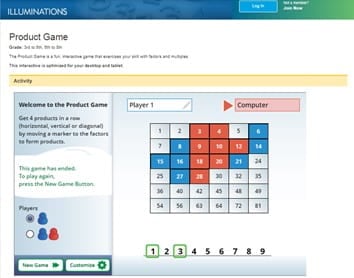
Some of the interactives require an NCTM subscription. The ones I have listed above should be okay to access without membership. I have subscribed for years and just paid $94 for this coming year. Well worth it if you plan on using their site extensively. This subscription also entitles you to a print and and online journal, blog capabilities, and more.
Enjoy these and so many more!!! Let us know if there are others you recommend. I’ll highlight more on my next post.

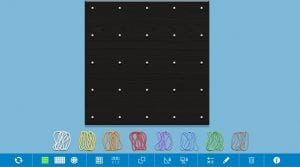 Check out the little “i” on how to get the most use out of it, but it has 2 variations for the board size and you can show it with/without gridlines or numbers. There are different colored bands which you drag to the board and stretch to whichever pegs you need. You can shade in areas, copy, and rotate (which is helpful to see if 2 similar shapes are equivalent). There is also a drawing palette in case you want to freehand something or draw lines (and with different colors as well).
Check out the little “i” on how to get the most use out of it, but it has 2 variations for the board size and you can show it with/without gridlines or numbers. There are different colored bands which you drag to the board and stretch to whichever pegs you need. You can shade in areas, copy, and rotate (which is helpful to see if 2 similar shapes are equivalent). There is also a drawing palette in case you want to freehand something or draw lines (and with different colors as well).